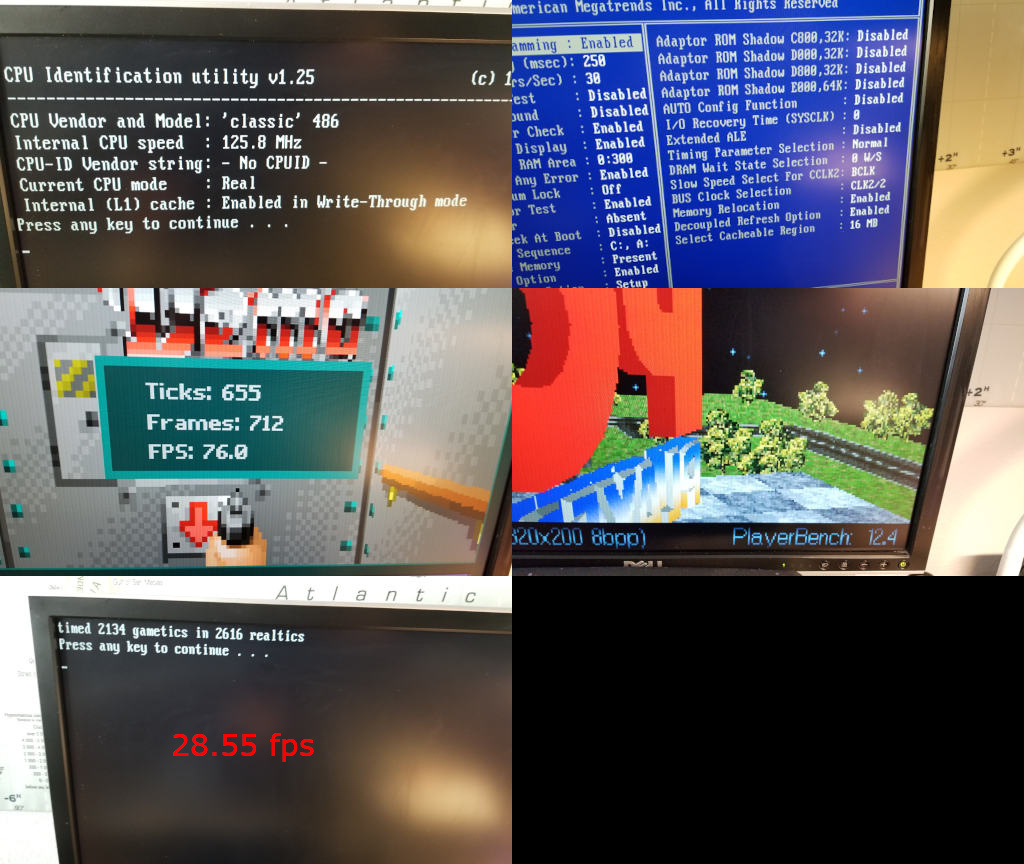I intend to try my Symphony board again when I'm finished with the SiS Rabbit. For now, I was able to get 2x50 working. I had to take the voltage to 4.10 V at 2x50, even though 4.0 V was sufficient for 3x37.5 (112.5 MHz). I ran the ISA at 16.7 MHz and received 2856 realtics = 26.15 fps. I didn't try running the ISA at 20 MHz for this case. I am using an AHA-1522B card and wasn't sure if the SCSI would hickup at 20 MHz.
Edit1:
tried 20 MHz ISA, but the resultant was slower, 3024 realtics. For each configuration, it looks like there is a maximum ideal ISA frequency, for which going higher reduces performance.
Edit2:
Took the BL3 up to 4.63 V at 120 MHz, but enabling the L1 would cause a crash. That was as much voltage as the VRM would output for the current demand at 120 MHz. In summary, on the SiS Rabbit board used, here are some tallies with GD5434:
80 MHz at 2x40 and ISA at 13.3 MHz, 3.3 V, then DOOM = 3562 = 20.97 fps
90 MHz at 2x45 and ISA at 15 MHz, 3.6 V, then DOOM = 3165 = 23.60 fps
100 MHz at 2x50 and ISA at 12.5 MHz, 4.1 V, then DOOM = 3162 = 23.62 fps
100 MHz at 2x50 and ISA at 16.7 MHz, 4.1 V, then DOOM = 2856 = 26.15 fps
100 MHz at 2x50 and ISA at 20.0 MHz, 4.1 V, then DOOM = 3024 = 24.70 fps
100 MHz at 3x33 and ISA at 13.3 MHz, 3.6 V, then DOOM = 3511 = 21.27 fps
105 MHz at 3x35 and ISA at 11.7 MHz, 3.6 V, then DOOM = 3334 = 22.40 fps
105 MHz at 3x35 and ISA at 14.0 MHz, 3.6 V, then DOOM = 3345 = 22.33 fps
108 MHz at 3x37.25 and ISA at 12.4 MHz, 4.0 V, then DOOM = 3238 = 23.07 fps
112.5 MHz at 3x37.5 and ISA at 12.5 MHz, 4.0 V, then DOOM = 3108 = 24.03 fps
For 108 & 112.5 MHz, I did not bother to narrow down the minimum voltage needed. It would be somewhere in the 3.7 - 4.0 V range. 90 MHz would probably make for a more ideal and longer lasting configuration anyway.
Edit3:
Tested the system with 16 MB and 32 MB to ensure DOOM was still functional at 2x45. It was. 16 MB is max for BL2/3 chips.
If we are able to get the SXL2 chips running at 90 MHz rather than 80 MHz, we can expect a DOOM score of about 22.5 fps, rather than 20.2 fps at 80 MHz.
Plan your life wisely, you'll be dead before you know it.

